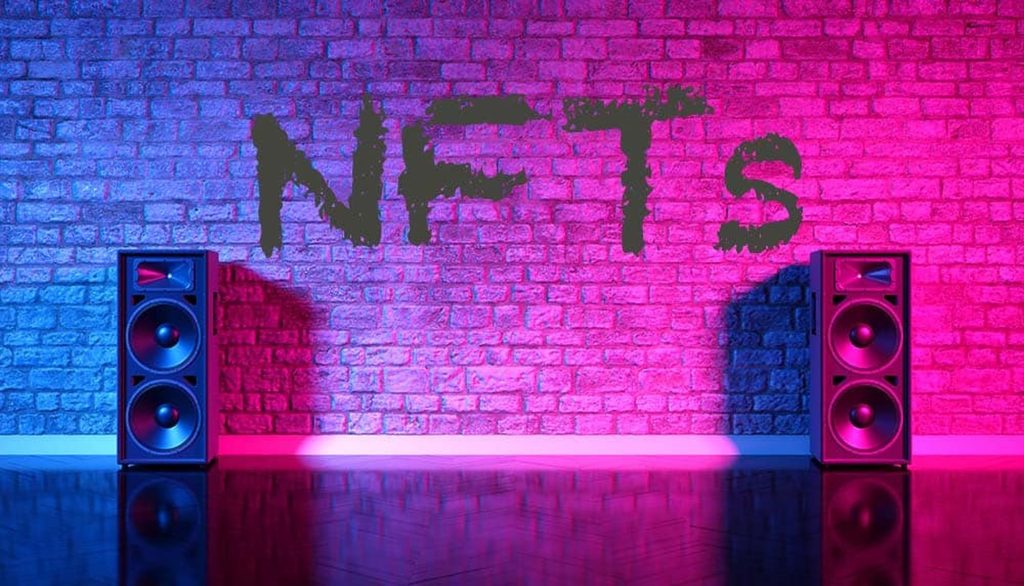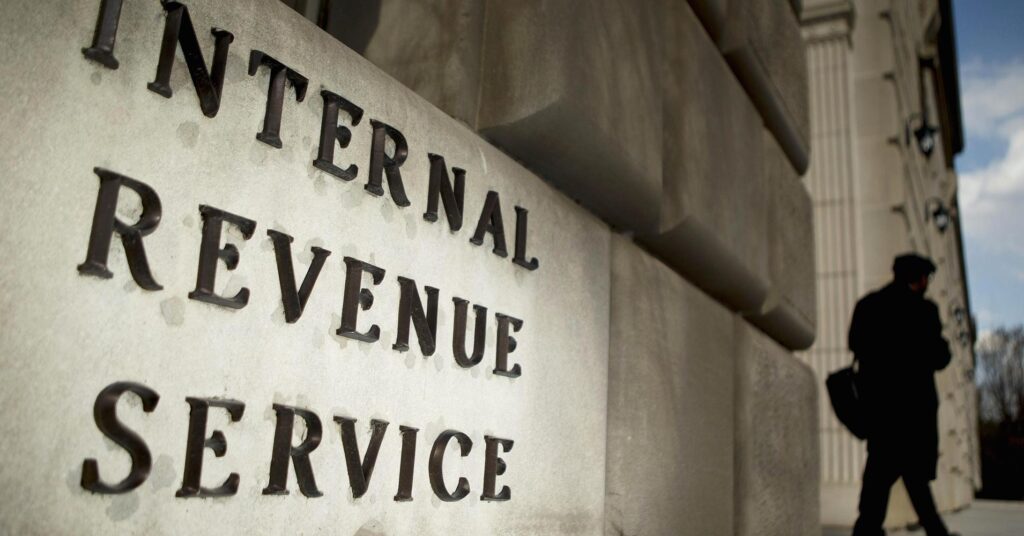TinyTap, a subsidiary of Animoca Brands specializing in educational technology (ed-tech), has revealed its latest advancements on August 30th, featuring the integration of cutting-edge artificial intelligence (AI) and nonfungible token (NFT) tools tailored for educators and parents.
With the newly integrated AI, both educators and platform users can now effortlessly craft educational games through topical prompts.
These prompts trigger the AI to swiftly generate corresponding games in mere minutes.
This update also introduces a text-to-image feature, enabling the creation of dynamic educational visuals to enrich the gaming experience.
The AI technology draws from a wealth of data amassed over a decade within the TinyTap system.
This database comprises the “learning architecture” gleaned from more than 250,000 games, millions of activities, and over 170 million play sessions.
Yogev Shelly, CEO of TinyTap, emphasized that the AI-generated content is carefully curated, ensuring alignment with specific age ranges:
“We have incorporated governors within the output to ensure games exist within the desired age range.”
Shelly elaborated that topics evolve from explanations to comprehensive activities.
Although the current beta tools are restricted to single-topic prompts, the future vision is to expand AI integration for richer and more engaging game creation.
Shelly highlighted that these tools expedite content development and access, ultimately empowering educators and parents to offer tailor-made learning experiences for individual children.
READ MORE: Anticipation Grows as Bitcoin Halving Nears, Experts Predict Surge Beyond $100,000
The roadmap of TinyTap also includes an AI tool named “Practice Anywhere,” which transforms existing media like educational YouTube videos into interactive content and games.
Animoca Brands’ Co-founder and Executive Chairman, Yat Siu, lauded the potential of AI in the education technology sector, predicting that streamlined content production will lead to an extensive educational library accessible to educators and parents.
Beyond AI enhancements, in the upcoming Q4, TinyTap plans to collaborate with Open Campus.
This partnership will enable NFT holders and EDU token holders to mint the educational games they create as NFTs.
This innovation is anticipated to invigorate the educational ecosystem, injecting new vitality into the field. Shelly remarked that “Teachers are some of the world’s biggest content creators…
These teachers will be able to reach wider audiences and start earning from beyond their classrooms.”
Amid the burgeoning concept of a “smart education system,” integrating blockchain, decentralized autonomous organizations, NFTs, and AI components, industry leaders inside and outside the Web3 realm have been underlining the transformative potential of this paradigm shift.
TinyTap’s recent advancements stand as a testament to the ever-evolving landscape of educational technology.
Other Stories:
Argo Blockchain Shows Resilience with 50% Reduction in Half-Year Losses
Shibarium Surpasses 100,000 Wallets in 24 Hours Post-Relaunch
The recent enforcement action by the United States Securities and Exchange Commission (SEC) against an NFT project has ignited a debate within the community, raising concerns about potential repercussions for similar projects falling under the same description and becoming targets for future SEC actions.
On August 28, the SEC took legal action against entertainment company Impact Theory, alleging the sale of unregistered securities through their NFTs named “Founder’s Keys.”
The SEC claims these NFTs were marketed as investments in the company, resulting in a purported fundraising of approximately $30 million.
The SEC contends that the NFTs in question meet the criteria for investment contracts and should be classified as securities.
According to the commission, the company violated the Securities Act of 1933 by conducting NFT sales without proper registration.
However, not everyone concurs with the SEC’s stance.
On the same day, SEC commissioners Hester Peirce and Mark Uyeda expressed their dissent, arguing that the statements made by the company and purchasers cited in the order do not constitute the kind of promises that form an investment contract.
Peirce and Uyeda further highlighted the SEC’s inconsistency in not pursuing enforcement actions against sales of other collectible items like watches and paintings that also come with vague promises of brand-building and increased resale value.
The incident has elicited reactions from community members who believe that numerous NFT projects align with the SEC’s description.
READ MORE: Europe Welcomes First-Ever Bitcoin ETF
A representative from the well-known NFT collection Azuki noted the potential significance of the case, suggesting that multiple NFT projects could share similarities with the charged project.
Critics contend that many NFT project founders, akin to Impact Theory, promote their offerings by enticing potential buyers with promises of profits tied to the project’s success.
In a conversation with Cointelegraph, Oscar Franklin Tan, Chief Legal Officer of NFT platform Enjin, expressed concerns over labeling all NFTs as securities.
Tan emphasized the diverse nature of NFTs, which can range from visual art to health records and property titles.
He cautioned against stifling creators’ exploration of various Web3 models due to regulatory uncertainty.
Tan emphasized the need for clearer regulatory guidelines from the SEC to prevent creators from inadvertently producing investment products and hindering the potential benefits of Web3 models.
This situation is not the first instance where NFTs have been debated in the context of securities.
Earlier in the year, a U.S. judge indicated that NBA Top Shot NFTs might qualify as securities based on the legal relationship established between investors and promoters.
As the debate rages on, the outcome of this case could set a precedent for the classification of NFTs in terms of securities regulation, shaping the future landscape of NFT projects and their interactions with regulatory authorities.
Other Stories:
Argo Blockchain Shows Resilience with 50% Reduction in Half-Year Losses
Shibarium Surpasses 100,000 Wallets in 24 Hours Post-Relaunch
Anticipation Grows as Bitcoin Halving Nears, Experts Predict Surge Beyond $100,000
A federal judge has overturned the United States Securities and Exchange Commission’s (SEC) denial of Grayscale Investments’ exchange-traded fund (ETF) proposal for its Bitcoin Trust.
However, experts caution that this ruling does not guarantee the immediate approval of the first Bitcoin ETF in the country.
Judge Neomi Rao of the U.S. Court of Appeals for the District of Columbia Circuit ruled on August 29 that Grayscale’s Bitcoin ETF plan was “materially similar” to already approved Bitcoin futures exchange-traded products by the SEC.
Rao’s decision largely criticized the SEC’s reasoning for rejecting Grayscale’s ETF, which was based on the ETF not being “designed to prevent fraudulent and manipulative acts and practices.”
Consequently, the matter will be sent back to the SEC for further review.
The U.S. SEC has consistently rejected applications for spot cryptocurrency ETFs thus far. Various applications, including those from BlackRock, ARK Invest, Bitwise Asset Management, and others, are currently under review.
The commission retains the authority to delay decisions on these applications, potentially postponing approvals until March 2024.
The SEC has not yet publicly commented on the appeals court’s ruling, but reports suggest that the commission will assess the case to determine its subsequent steps.
READ MORE: Argo Blockchain Shows Resilience with 50% Reduction in Half-Year Losses
While the SEC may contest the ruling, experts speculate that Grayscale’s initial triumph might set a precedent for future approvals.
ETC Group’s CEO, Tim Bevan, expressed confidence that the victory would pave the way for U.S. spot Bitcoin ETFs despite an anticipated SEC appeal.
He predicted a likely mass approval of applications meeting requirements, possibly occurring in the first quarter of 2024.
Alex Adelman, CEO and co-founder of Lolli, contended that the appeals court’s decision would pressurize the SEC to reconsider its stance on spot Bitcoin ETFs.
Adelman perceived the surge in BTC price following the news as a “vote of confidence” in investment products linked to Bitcoin.
The Crypto Council for Innovation (CCI) spokesperson noted that the ruling broadens the scope for various investors to introduce spot Bitcoin vehicles in the U.S., bringing spot Bitcoin ETFs closer to potential launch.
The next steps for Grayscale or the SEC remain uncertain. Grayscale could rework its application to align more closely with a Bitcoin futures-linked ETF.
Alternatively, the SEC might opt for an “en banc” hearing involving all judges on the D.C. circuit, rather than the three who presided over the Grayscale case.
Other Stories:
Shibarium Surpasses 100,000 Wallets in 24 Hours Post-Relaunch
Europe Welcomes First-Ever Bitcoin ETF
Anticipation Grows as Bitcoin Halving Nears, Experts Predict Surge Beyond $100,000
Shibarium, the innovative layer-2 blockchain designed for Shiba Inu, has celebrated a significant milestone, surpassing 100,000 wallets registered on its platform.
Impressively, within a mere 24 hours following its re-launch on August 28, an impressive 35,000 new wallets joined the platform.
Shytoshi Kusama, the co-founder and lead developer of Shiba Inu, officially announced Shibarium’s restoration in an August 28 blog post.
Initially, Shibarium boasted 65,000 wallets and had processed 350,000 transactions.
These figures, however, have experienced a remarkable ascent.
A striking 55.8% increase in wallet count and a 20.2% surge in transactions have been documented since, as reported by Shibariumscan.io.
Presently, the Shibarium block explorer reveals a staggering 101,277 wallets that have facilitated an impressive 420,897 transactions across 344,614 blocks.
The network’s efficiency is evident through its average block time of just 5 seconds.
Kusama emphasized that the relaunch demonstrated the security of funds on the platform, reinforcing that they had always been safe.
He also extended gratitude to Sandeep Nailwal, co-founder of Polygon Labs, for lending a helping hand during the platform’s reboot.
READ MORE: Casino Gender: Which Games Do Men and Women Prefer?
Kusama noted that Polygon’s support was instrumental in achieving a successful resolution and praised their strategic decision to pivot and integrate with Polygon.
In the aftermath of the re-launch, SHIB, the native token of Shiba Inu, experienced a positive price movement, climbing by 3.6% to reach $0.00000825, as per CoinGecko data.
However, it is pertinent to note that SHIB remains 14.3% below its pre-outage price of $0.00000963.
Kusama attributed the initial outage to an overwhelming influx of transactions and users that led the platform to enter fail-safe mode.
Subsequently, the Shibarium team took robust measures to enhance server infrastructure, scaling it by an astonishing 1500%.
These enhancements were strategically implemented to alleviate congestion on-chain and ensure smooth functionality.
Shibarium’s significance lies in its position as an Ethereum layer-2 network, leveraging SHIB for gas fees.
The platform’s primary focus is on fostering the development of gaming and metaverse applications, showcasing its commitment to innovation within the blockchain and cryptocurrency ecosystem.
Other Stories:
Former FTX CEO Sam Bankman-Fried’s Legal Team Deems Trial Preparations Inadequate
Three Former Team Members Accused of $16 Million Theft from Pepecoin (PEPE) Multisig Wallet
Hashdex Challenges Status Quo with Innovative Approach in Pursuit of Bitcoin ETF Approval
Friend.tech, the latest decentralized social media (DeSo) app in the world of cryptocurrency, is facing significant backlash due to its recent decision to penalize users who opt for forks or copycat versions of its tokenized social media platform.
In a tweet from the official @friendtech X account on August 28, the company stated, “To make sure loyal users are rewarded fairly during our beta, users moving to forks and copies will automatically opt out of earning Points and forfeit existing points.”
This move was met with criticism, particularly from the crypto community, as it was seen as anti-competitive and contrary to the principles of the industry.
While Friend.tech did not explicitly mention any rivals, some users pointed to a new DeSo application named Shares, often referred to as “SocialFi,” that is set to enter public beta on August 31.
Friend.tech had been distributing “reward points” to its beta testers on a weekly basis, with plans to distribute a total of 100 million points over six months.
However, the purpose of these points was not clarified until an August 15 announcement, stating that they would serve a special purpose upon the app’s official release.
Speculations arose that these points could translate into friend.tech governance tokens or hold financial value for users, potentially leading to a native token airdrop in the future.
The community’s reaction to Friend.tech’s decision was swift and negative, with numerous users expressing disappointment in the approach.
READ MORE: Former FTX CEO Sam Bankman-Fried’s Legal Team Deems Trial Preparations Inadequate
Prominent trader CryptoKaleo criticized the move, stating that penalizing users for trying other platforms goes against the industry’s ethos. The sentiment was shared by others who deemed it an inappropriate response to competition in the Web3 arena.
Amid the uproar, the pseudonymous founder of friend.tech, known as “Racer,” issued an apology on August 29 through the app’s official X account.
Racer acknowledged the initial decision as a “stupid statement” made out of fear of potential competition, ultimately rescinding the penalization plan.
This controversy arose less than three weeks after Friend.tech’s public launch on August 11.
In the aftermath, the app witnessed a decline in key metrics such as user activity, inflows, and transaction volume.
According to data from Dune Analytics, transaction numbers on Friend.tech plummeted over 90% from their peak of nearly 525,000 on August 21 to fewer than 50,000 cumulative transactions on August 28.
In summary, Friend.tech, the emerging decentralized social media app in the cryptocurrency space, faced criticism for its decision to punish users who explore forks or imitations of its platform.
The backlash prompted an apology from the app’s founder, Racer, as it grapples with declining metrics post-launch.
Other Stories:
Casino Gender: Which Games Do Men and Women Prefer?
Hashdex Challenges Status Quo with Innovative Approach in Pursuit of Bitcoin ETF Approval
Three Former Team Members Accused of $16 Million Theft from Pepecoin (PEPE) Multisig Wallet
Bitcoin mining revenue, often termed as “hash price,” has plummeted to its lowest levels since the downfall of FTX in November 2022, despite the hash rate of the Bitcoin network reaching unprecedented heights.
As of August 18, the Bitcoin network’s hash rate surged to an all-time high of 414 exahashes per second (EH/s), indicating a remarkable 54% increase from the start of 2023 and an 80% surge over the past year, according to data from Blockchain.com.
While this surge in hash rate bolsters the network’s security, the situation isn’t as optimistic for Bitcoin miners.
Revenue for miners has experienced a significant decline, sinking to levels comparable to the market cycle’s nadir of approximately $16,500 in November 2022.
Presently, according to HashPriceIndex, the daily revenue stands at merely $0.060 per terahash per second, a stark drop from early May when the fervor surrounding the Bitcoin Ordinals inscription prompted heightened demand for block space.
Dylan LeClair, a market analyst, noted the juxtaposition of dwindling revenue and the peak hash rate.
READ MORE: IRS Proposes Simplified Reporting for Digital Asset Taxes, Faces Industry Scrutiny
LeClair emphasized that while more efficient mining rigs are continually being developed, a point of balance must be reached, where rising prices compensate for the escalating hash rates to ensure mining remains profitable.
The predicament has led Bitcoin miners to rely on funds generated from stock sales during the second quarter to weather the storm of the bear market.
According to Bloomberg, major publicly traded mining companies collectively raised around $440 million through stock sales in Q2, which temporarily sustained their operations.
Mark Jeftovic, curator of the Bitcoin Capitalist newsletter, highlighted a concerning trend.
Some mining firms, he pointed out, are disproportionately diluting shareholders, an action that could prove detrimental if the rate of dilution outpaces Bitcoin’s value increase.
He metaphorically likened this scenario to moving in the wrong direction on a treadmill, emphasizing the importance of aligning dilution and value appreciation.
In summary, the Bitcoin network’s hash rate has surged to unprecedented levels, bolstering its security.
Nonetheless, miners are grappling with plunging revenues, necessitating price adjustments to ensure profitability amid the soaring hash rates.
Mining companies have turned to stock sales to endure the market’s downturn, while experts underscore the importance of aligning dilution rates with Bitcoin’s value trajectory.
Other Stories:
Bitcoin’s $20,000 Value Holds Steady Over Six Years When Adjusted for Inflation
Former Worldcoin Insider Alleges Unlawful Practices and Mismanagement
Co-founder of Tornado Cash Cryptocurrency Service Released on Bail
Paolo Ardoino, the Chief Technology Officer of Tether, has responded to speculations surrounding images of industrial containers circulating online.
These images had led to questions about Tether’s involvement in Bitcoin mining, prompting Ardoino to clarify the situation.
In a recent post on X (formerly Twitter) on August 26, Ardoino provided insights into a photo he shared on August 24.
The picture showcased a container adorned with a photoshopped Tether Energy logo, which piqued the curiosity of many observers.
Ardoino explained that the image depicted a control room at a Bitcoin mining site operated by Tether, which is nearing completion and preparing to begin operations.
However, when pressed about the location of the mining site, Ardoino firmly declined to disclose it.
While he acknowledged that the site is situated in South America, he refrained from divulging further details due to security concerns.
He expressed that the decision to withhold exact locations was driven by a desire to prevent potential harassment of personnel, especially given the presence of Tether critics who have raised doubts about its legitimacy.
READ MORE: Former Worldcoin Insider Alleges Unlawful Practices and Mismanagement
Addressing skeptics who questioned the presence of the Tether logo on the containers, Ardoino clarified that it was a deliberate branding choice.
He revealed that the team had expected the photo to gain media attention and wanted to establish branding.
However, he noted that displaying prominent logos at mining sites could compromise the physical privacy and security of these locations.
Ardoino anticipated that operations at the mining site would commence in September. He conveyed the enthusiasm of the team and their diligent efforts to launch operations within the next few weeks.
This development follows news about Tether’s involvement in enhancing transparency within the Bitcoin mining sector.
In an interview with Cointelegraph on August 17, Ardoino elaborated on Tether’s ongoing work on a mining software named Moria.
This software aims to provide more comprehensive data analytics regarding energy production at Bitcoin mining sites.
Ardoino emphasized the importance of improved analytics and performance evaluation in the realm of Bitcoin mining.
He believes that Moria’s insights into energy usage, especially from renewable sources like wind and solar, could optimize mining operations and boost production.
Other Stories:
IRS Proposes Simplified Reporting for Digital Asset Taxes, Faces Industry Scrutiny
Co-founder of Tornado Cash Cryptocurrency Service Released on Bail
Bitcoin’s $20,000 Value Holds Steady Over Six Years When Adjusted for Inflation
Decentralized finance (DeFi) platform Balancer, known for its automated market maker mechanism, has confirmed an exploit that resulted in a loss of nearly $900,000.
The incident occurred shortly after the protocol disclosed a vulnerability affecting multiple pools, adding to concerns in the DeFi space.
This breach, unveiled on August 27 via a post on X (formerly Twitter), has been linked to a specific Ethereum address, purportedly belonging to the attacker.
Notably, Meier Dolev, a blockchain security expert, revealed the identity of this address.
Following the attack, the malicious entity received two separate transfers of the stablecoin Dai (DAI), totaling $636,812 and $257,527.
Consequently, the balance in the attacker’s address escalated to an alarming $893,978.
Acknowledging the situation, Balancer’s team addressed the exploit and its ongoing consequences. Despite implementing significant risk-reducing measures over recent days, the affected pools were not completely paused due to inherent limitations.
The protocol emphasized that users who engaged with these affected liquidity pools must take immediate action to minimize the risk of further exploitation.
The recommended course of action is to withdraw funds from these pools.
READ MORE: IRS Proposes Simplified Reporting for Digital Asset Taxes, Faces Industry Scrutiny
The underlying issue was first brought to light on August 22 when Balancer alerted users to a critical vulnerability in its boosted pools.
A subsequent effort to mitigate potential losses involved encouraging users to withdraw funds and temporarily halting pool activities.
This vulnerability extended its impact across various blockchain networks, including Ethereum, Polygon, Arbitrum, Optimism, Avalanche, Gnosis, Fantom, and zkEVM.
Initially, only a fraction of Balancer’s total assets (1.4%) were deemed susceptible on the day of the vulnerability’s discovery, amounting to over $5 million in asset exposure.
By August 24, the at-risk assets had decreased, but still accounted for $2.8 million, approximately 0.42% of the total value locked in the platform. Balancer’s team shared essential insights with their users through X:
“While we believe that funds in the mitigated pools (identified as ‘mitigated’) are secure, we strongly recommend transitioning to safer pools promptly or making withdrawals.
Pools that could not be effectively mitigated are labeled as ‘at risk.’ For those participating in these pools, we advise immediate exit.”
Balancer was initially deployed on the Optimism network in June of the previous year, aiming to enhance user experience and minimize transaction fees within the DeFi landscape.
However, this incident underscores the persistent challenges and risks faced by decentralized financial protocols and the broader crypto community.
Other Stories:
Co-founder of Tornado Cash Cryptocurrency Service Released on Bail
Bitcoin’s $20,000 Value Holds Steady Over Six Years When Adjusted for Inflation
Former Worldcoin Insider Alleges Unlawful Practices and Mismanagement
Bitcoin (BTC) is exhibiting on-chain activity reminiscent of the period preceding its historic surge to all-time highs in 2021, recent data reveals.
In a post shared on August 25th, Ki Young Ju, the CEO of CryptoQuant, a prominent analytics platform, disclosed that Bitcoin velocity has reached multiyear lows.
This trend indicates reduced movement of BTC at its current price levels, resulting in a lack of pronounced buying or selling pressures.
The concept of velocity, which gauges the rate of BTC units traversing the network, highlights this stagnant state.
CryptoQuant’s data highlights that on a daily basis, this metric is currently at levels that were last observed back in October 2020.
Ki Young Ju offered a two-fold perspective on this situation.
On one hand, it can be interpreted positively as evidence of whales retaining their BTC holdings.
Conversely, it could also be perceived negatively due to the limited transfer of BTC to new investors.
This scenario extends to high-volume traders as well, indicating a subdued trading activity amongst them.
This aligns with the narrative that the market is cautiously observing Bitcoin’s movements, adopting a “wait and see” approach.
READ MORE: Bitcoin’s Evolution Accelerates: Recursive Inscriptions Unveil New Horizons Beyond Cryptocurrency
Notably, the early months of the year witnessed the influx of fresh capital into the market, coinciding with BTC/USD’s impressive Q1 performance, achieving a remarkable 70% gain.
A significant aspect lies in the volume data. In late 2020, a similar pattern emerged where a low point in this metric coincided with Bitcoin’s surge past $20,000 and eventually reaching new all-time highs a year later.
However, in contrast to that period, Bitcoin’s current value of $26,000 seems to be oversold according to its daily relative strength index (RSI), as indicated by Cointelegraph Markets Pro and TradingView.
A recent report by Cointelegraph highlighted that the 12-hour RSI has hit a five-year low this month and is yet to recover, reflecting a delay in the resurgence of investor interest.
In conclusion, Bitcoin’s on-chain behavior is resembling the prelude to its previous historic price rally.
The slowed movement of BTC and the subdued trading activities among high-volume investors reflect a sense of caution prevailing in the market.
However, the oversold RSI suggests a potential for renewed investor engagement, albeit with a delay.
Other Stories:
Binance’s Russian P2P Crypto Exchange Renames Sanctioned Banks Amidst Controversy
XRP Faces Investor Sell-Off as Whale Transfers 29 Million Tokens Amid Price Dip
Galaxy Digital Poised to Manage FTX’s Recovered Cryptocurrency Holdings
The IRS, responsible for US tax collection, has unveiled proposed regulations regarding digital asset sales and exchanges by brokers.
These regulations aim to simplify tax filing and reduce tax evasion by introducing Form 1099-DA.
This form is designed to aid taxpayers in calculating taxes on digital asset gains and losses, thus negating the need for complex calculations and expensive digital asset tax preparation services.
The move aligns digital asset reporting with reporting standards for other asset types, fostering consistency.
The draft proposal, a substantial 282 pages, is set for publication in the Federal Register on August 29.
It is a part of the Biden administration’s execution of the bipartisan Infrastructure Investment and Jobs Act (IIJA), which is projected to generate $28 billion in fresh tax revenue over a decade.
Envisaged to take effect in 2026 for transactions in 2025, the rules’ implementation timeline was established. Public commentary on the proposal will be accepted until October 30, followed by at least one public hearing.
However, the initial response suggests potential challenges for the IRS. Kristin Smith, CEO of the Blockchain Association, underscored the uniqueness of the crypto ecosystem and stressed the need for tailored rules that avoid affecting participants without compliance options.
The DeFi Education Fund’s CEO, Miller Whitehouse-Levine, criticized the proposal as attempting to apply regulations built around intermediaries to a context where they don’t exist.
Criticism has extended to political spheres as well. Patrick McHenry, chairman of the House of Representatives Financial Services Committee, deemed the proposal an extension of the Biden administration’s assault on the digital asset sector.
READ MORE: Binance’s Russian P2P Crypto Exchange Renames Sanctioned Banks Amidst Controversy
McHenry asserted that the rules should adhere to the narrow, precise criteria laid out after the Infrastructure Investment and Jobs Act’s passage.
He applauded the exemptions mirroring those in the Keep Innovation in America bill, co-authored by himself and Rep.
Ritchie Torres, aimed at rectifying the perceived inadequacies of digital asset reporting provisions in the IIJA.
Coin Center, an advocacy group, had previously communicated digital asset taxation suggestions to Sens. Ron Wyden and Mike Crapo.
The suggestions targeted digital assets specifically and voiced concerns about privacy implications.
In conclusion, the IRS’s proposed regulations on digital asset reporting via brokers aim to streamline tax filing and prevent evasion.
The introduction of Form 1099-DA seeks to simplify calculations for taxpayers and bring digital asset reporting in line with other asset types.
Yet, the proposal faces early criticisms for its applicability in the unique crypto landscape and its potential regulatory overreach.
Other Stories:
Bitcoin’s Evolution Accelerates: Recursive Inscriptions Unveil New Horizons Beyond Cryptocurrency
Galaxy Digital Poised to Manage FTX’s Recovered Cryptocurrency Holdings
XRP Faces Investor Sell-Off as Whale Transfers 29 Million Tokens Amid Price Dip











